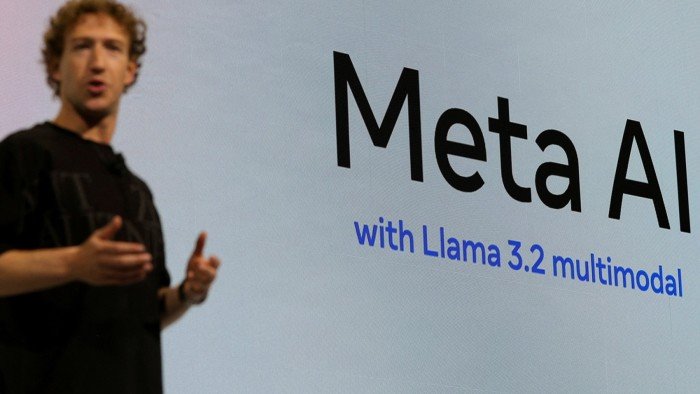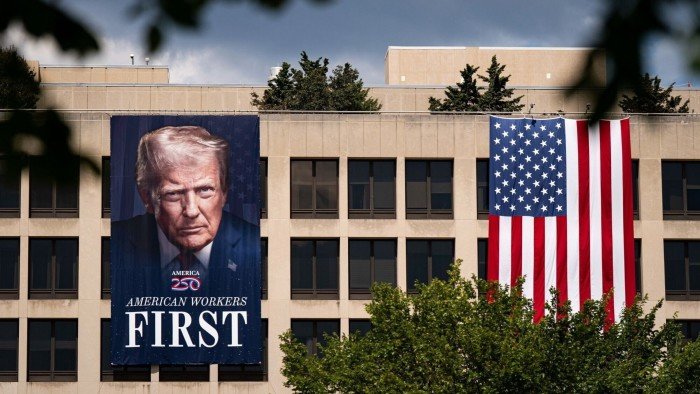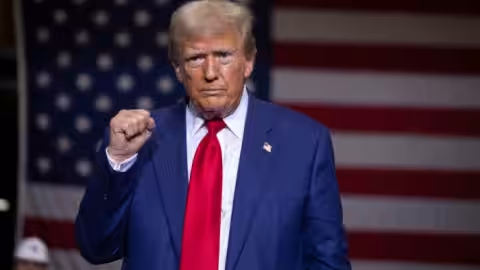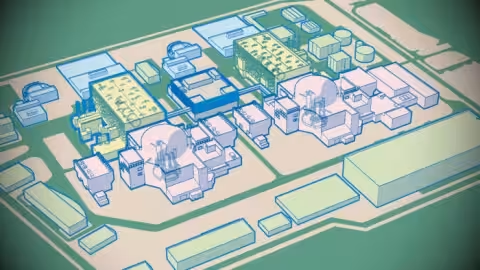Good morning. Investors are expecting a dovish shift at the Federal Reserve after Jay Powell’s term expires. The fed funds rate after April 2026, as implied by the futures market, has been dropping for the past month. This is likely due to the deepening expectation that Trump will pick an (how to put this?) obedient dove to replace Powell in May. But it could also be due to good recent economic data. Let’s hope it’s the latter. Email us: unhedged@ft.com.
Meta and private credit
On Friday, our colleagues Eric Platt, Oliver Barnes and Hannah Murphy wrote that
Meta is looking to raise $29bn to fund its all-in push into artificial intelligence . . . Talks between the Instagram-owner and private credit investors have advanced, with several large players including Apollo Global Management, KKR, Brookfield, Carlyle and Pimco involved in the discussions, according to people familiar with the matter . . .
Meta is hoping to raise $3bn of equity from them and then a further $26bn of debt. But it is debating how to structure the massive debt raising . . .
[Meta is] considering ways that could make the debt more easily tradeable once it was issued, the people added. That is one factor potential investors who have studied the transaction have raised, given its sheer size.
This struck us, on first reading, as a little bit weird. There is a place to raise large amounts of easily tradeable debt capital at competitive prices: the corporate bond market. It would eat up more Meta debt like a pig eats corn. Meta is a great credit. It has a net cash position of $21bn (including leases). Its debt/equity ratio is .16. It generated $50bn in free cash flow in the last twelve months even as it has dumped $44bn on capital expenditures. Its 2054 bonds trade at a yield of less than a percentage point higher than 30 year Treasuries.
The company, in short, looks wildly under-leveraged and easy to lend to, rather than a company that needs a whizzy private debt-equity structure to get its hands on some money. All of this is miles away from Intel, a leveraged and lossmaking company that stuck a debt and equity deal with Apollo to finance a new chipmaking plant last year.
A well-structured deal might keep the additional debt off of Meta’s balance sheet, and might even lay some of the risk of huge data centre investments on to someone else. So (one might argue) a smart deal might make Meta appear more like a classic, capital-light tech company deserving a high price/earnings ratio on its equity (its forward P/E is now around 26). But this argument doesn’t work. Meta is not a particularly capital-light business any more, and a financing structure is not going to change this in the eyes of investors. Or at any rate it shouldn’t.
The only way we can make sense of a deal like this is not in terms of Meta’s demand for private debt financing, but the big asset managers’ supply of the stuff. A huge amount of money has been raised by private credit providers (over $1tn in the five years ending in 2024 according to McKinsey). There is loads of dry powder in private equity, too. So maybe the Apollos and KKRs of the world are appealing to Meta not because their financing is cleverly structured, but because it is cheap. Investors can work out for themselves what that means for private capital’s future returns.
We will get central bank digital currencies but we probably need a crisis first
Last week we argued that JPMD, a deposit token issued by JPMorgan Chase, does not add much value as a payment technology, outside of facilitating crypto asset trading. The bank pitches it as a way to make cross-border payments more timely and efficient — but this only works if both payer and payee are JPMorgan clients, and if that’s the case, cross-border payments should be smooth anyway.
That said, if commercial banks’ reserves at the central bank were tokenised, then money could indeed move “at the speed of the internet” between different banks, even across borders. If that were so, there could be a two-tiered digital money system (commercial bank deposit tokens and central bank digital currencies) that is perfectly analogous to our current two-tiered analogue monetary system (commercial bank deposits and bank reserves held at the central bank). In that world, JPMD could have a much broader use case, because it could be exchanged in real time for Bank of America or HSBC deposit tokens (these don’t exist yet, but they would).
A lot of ink has been spilled on the subject of central bank digital currencies — their use cases, their risks, and how to design them (we recommend this primer from our colleagues at Monetary Policy Radar). To summarise, CBDCs are a digital form of a country’s official currency, controlled and issued by a central bank. They could, in theory, come in two flavours: retail CBDCs, that could be used by the general public and a digital analogue to physical cash; and wholesale CBDCs, that could only be used among commercial banks for interbank transactions.
Creating retail CBDCs is not currently on the table in the US. There are many issues to be resolved first, but as of now the biggest barrier is the Trump administration, which has issued an executive order prohibiting their creation. Presumably this is because Trump wants to protect the private digital currency industry (in which he is a participant) from government competition. This is a shame. Why should citizens be restricted to owning the obligations of the state only in the archaic form of bits of paper or metal? And as Daleep Singh, chief global economist at PGIM, argued to us, if the world is moving towards CBDCs, it behoves the US to be leading that charge or at least playing a big role in CBDC regulation.
Wholesale CBDCs might be on the table, though. Tim Massad at the Harvard Kennedy School, formerly chair of the CFTC, argued to us that the Trump ruling did not really target wholesale CBDCs — just retail. “I don’t think they are particularly worried about [wholesale], and ultimately [the Trump administration] want[s] them.” In theory, wholesale CBDCs are not that risky. “Just as reserves don’t leave the Fed’s walls — they are simply transferred between account holders — a CBDC would not be out ‘in the wild’ in the way that deposits (and tokenised deposits) are,” said Steve Kelly at the Yale Program on Financial Stability.
So as of now, tokenised retail currencies are firmly in the hands of payment companies and stablecoin issuers. We expect innovation to continue to flower. Resistance from the Trump administration and the slow pace of change in (and especially between) governments mean an officially-backed, international, digital two-tiered money and banking system is a ways off.
How will we get there? Unhedged has a prediction, based on what we know about the history of banking. Private digital money will continue to grow until, at a moment of stress, it falls into a major crisis. Governments will have to intervene in a big way. Out of that intervention, a proper digital money system will, with a little luck, be born.
One Good Read
FT Unhedged podcast

Can’t get enough of Unhedged? Listen to our new podcast, for a 15-minute dive into the latest markets news and financial headlines, twice a week. Catch up on past editions of the newsletter here.























